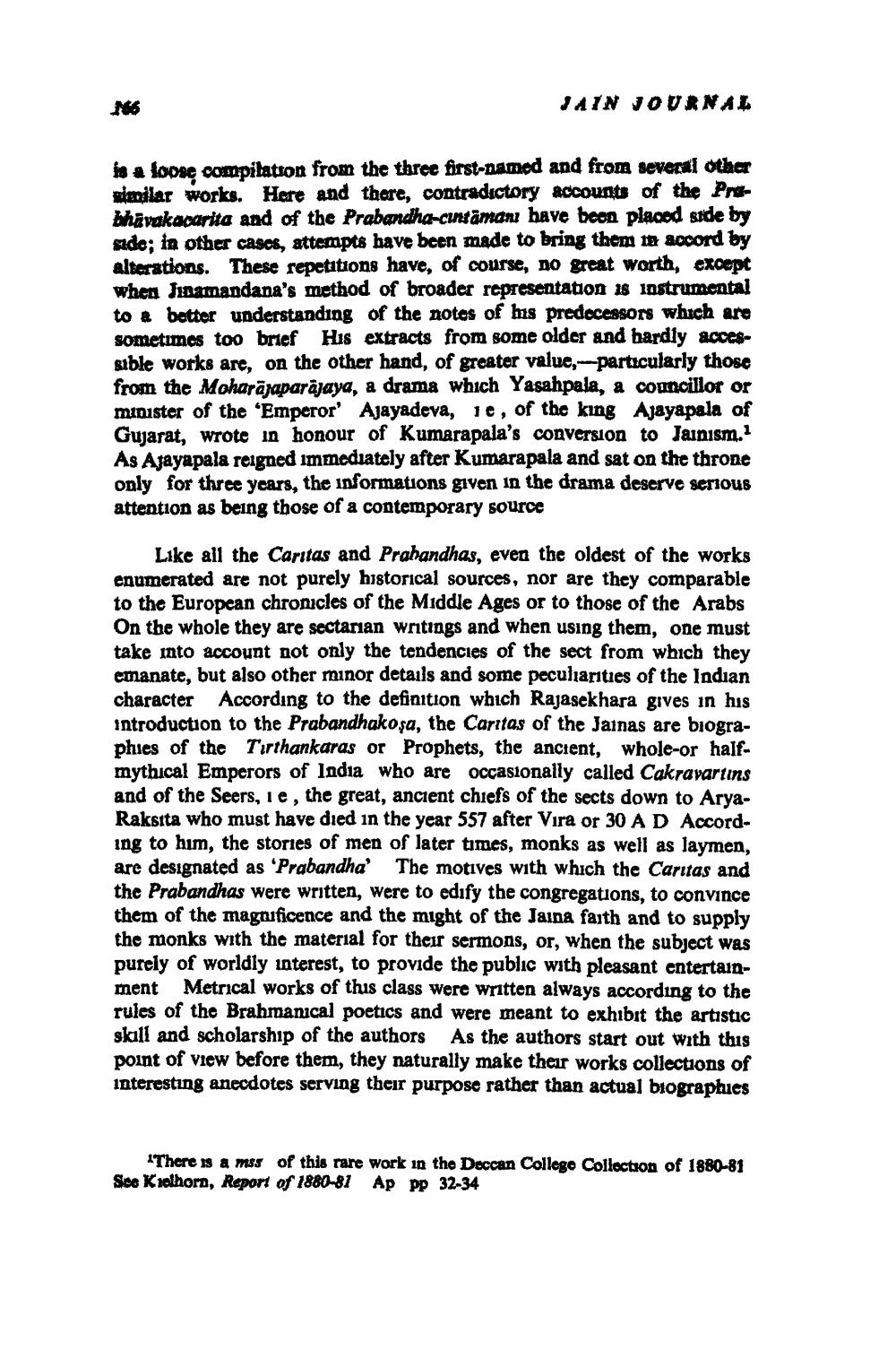________________
166
JAIN JOURNAL
is a loose compilation from the three first-named and from several other similar works. Here and there, contradictory accounts of the Prabhavakacarita and of the Prabandha-cintamanı have been placed side by side; in other cases, attempts have been made to bring them in accord by alterations. These repetitions have, of course, no great worth, except when Jinamandana's method of broader representation is instrumental to a better understanding of the notes of his predecessors which are sometimes too brief His extracts from some older and hardly accessible works are, on the other hand, of greater value,-particularly those from the Moharājaparājaya, a drama which Yasahpala, a councillor or minister of the 'Emperor' Ajayadeva, 1e, of the king Ajayapala of Gujarat, wrote in honour of Kumarapala's conversion to Jainism.1 As Ajayapala reigned immediately after Kumarapala and sat on the throne only for three years, the informations given in the drama deserve serious attention as being those of a contemporary source
Like all the Caritas and Prabandhas, even the oldest of the works enumerated are not purely historical sources, nor are they comparable to the European chronicles of the Middle Ages or to those of the Arabs On the whole they are sectarian writings and when using them, one must take into account not only the tendencies of the sect from which they emanate, but also other minor details and some peculiarities of the Indian character According to the definition which Rajasekhara gives in his introduction to the Prabandhakosa, the Caritas of the Jainas are biographies of the Tirthankaras or Prophets, the ancient, whole-or halfmythical Emperors of India who are occasionally called Cakravartins and of the Seers, ie, the great, ancient chiefs of the sects down to AryaRaksita who must have died in the year 557 after Vira or 30 AD According to him, the stories of men of later times, monks as well as laymen, are designated as 'Prabandha' The motives with which the Caritas and the Prabandhas were written, were to edify the congregations, to convince them of the magnificence and the might of the Jaina faith and to supply the monks with the material for their sermons, or, when the subject was purely of worldly interest, to provide the public with pleasant entertainment Metrical works of this class were written always according to the rules of the Brahmanical poetics and were meant to exhibit the artistic skill and scholarship of the authors As the authors start out with this point of view before them, they naturally make their works collections of interesting anecdotes serving their purpose rather than actual biographies
"There is a mss of this rare work in the Deccan College Collection of 1880-81 See Kielhorn, Report of 1880-81 Ap pp 32-34




